was more of a Neil Gaimancomic book writer than a novelist. However, he had garnered the same amount of respect and accolades from both of his main works, as well as being a screenwriter and voice actor among others.
Born Neil Richard Gaiman on November 10, 1960, at Portchester, Hampshire, England, to Jewish parents, Neil was heavily influenced by lots of contemporary literature that he enjoyed reading while he was young. But, what really nailed the coffin for his love of written words is the discovery of comic books.
Since then, he had dabbled with an extensive portfolio of graphic comic books and credits as one of the creators of modern comics, along with best-selling novels in his entire career.
His writing career took off as he worked as a journalist in the United Kingdom. His first book was a biography of the then famous group of musicians, Duran Duran.
Then, he proceeded to write down graphic novels largely printed by DC Comics. His groundbreaking comic series, The Sandman, which ran with 72 issues and collected numerous US awards, became the first comic to receive a literary award.
Other notable works Neil Gaiman wrote include the award-winning novels Stardust, American Gods, Coraline, and The Graveyard Book.
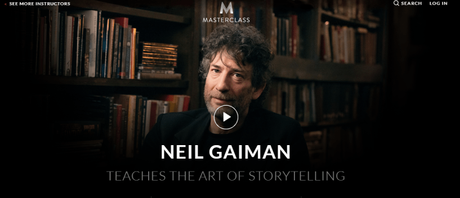
works had definitely transcended genres and reached audiences of all ages, as one of the top ten living post-modern writers according to the Dictionary of Literary Biography and a Neil Gaimanprolific creator of prose, science fiction, fantasy, and drama, Neil Gaiman certainly achieved the cult status he deserved.
Early Life
Neil Gaiman was born in Portchester, a part of Hampshire County in southern England. With a Polish-Jewish and other Eastern European-Jewish origins, his father, David Bernard Gaiman, worked at a chain of grocery stores his grandfather has established after emigrating from Antwerp, Belgium; while his mother, Shiela Gaiman, was a pharmacist.
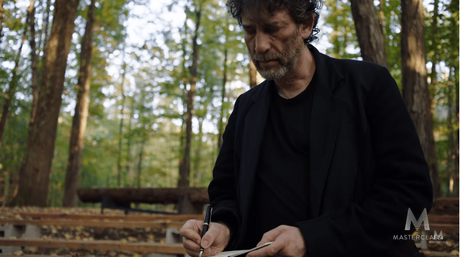
He has two younger sisters, Claire and Lizzy. In 1965, his family moved to West Sussex, East Grinstead, where his parents studied Scientology, in which Gaiman did not care less.
Stardom and Beyond
American Gods won several major horror/fantasy/sci-fi awards in both England and America. Since the release of American Gods, Gaiman's influence and popularity have blossomed. Coraline, written in 2002, has been adapted into a movie, as has Stardust.
Gaiman has written more comics, including a Batman story arc, and even an episode of Doctor Who. He has released novels both written alone and with co-authors. His newest solo novel, The Ocean at the End of the Lane, also won several awards.

His newest book is The View from the Cheap Seats, a collection of nonfiction essays about topics that have interested Gaiman since his days spent at the library as a little kid. He now lives in the U.S., just outside Minneapolis.
Neil Gaiman MasterClass Review 2019 | Get Full Details Here
What You Get in Neil Gaiman's MasterClass
If you haven't taken a masterclass before, here's what it comes with: you're getting a semester's worth of teaching and homework in one intense day of classes, followed by personal feedback and instruction.
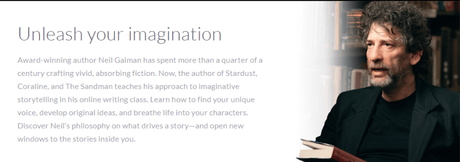
In this specific case, there are nineteen videos totaling approximately five hours and numerous workbooks with tips and homework assignments in PDF format. The download contains a chunk of text from the lesson, titles of resources for further reading, and truly intense homework assignments.
The class is jam-packed with Gaiman telling stories concerning his own writing expertise. I've always found a good story told honestly sucks you in, rings your emotions like a sympathetic tuning fork, and reminds you why you love to write your own stories.
In this course, Gaiman demonstrated an astonishing kind of teaching: he showed the thing done right before breaking it down for his students.
Each lesson is superbly shot in HD format with visually amazing backgrounds.
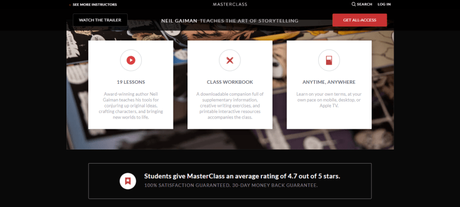
Here's an outline of all the lessons:
I was expecting the videos, but the class workbook plus the download for each lesson surprised me. Each was well designed and helpful.
The MasterClass also includes "office hours," which gives you the opportunity to ask Gaiman questions personally and get a response via video. I'm too nervous to try that yet, so I'll have to get back to you on that one!
What is MasterClass?
Entrepreneur Aaron Rasmussen and film editor and director David Rogier started MasterClass in 2015. Based in San Francisco, it's an online education platform for creative professionals.
Of course, you don't need to travel to San Francisco to take a MasterClass.
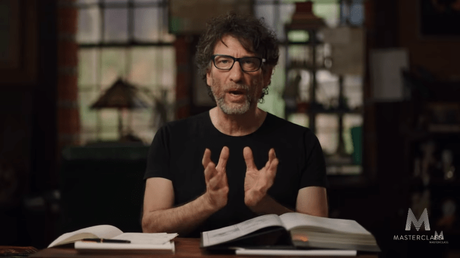
You can watch MasterClass courses using your computer or phone and consume the materials at your own pace.
As a student, you can learn the art of comedy from Steve Martin, writing thrillers from James Patterson, dramatic writing from David Mamet, screenwriting from Aaron Sorkin and lots more.
It is a great way of learning online from top creators you would not normally have access to.
Who is MasterClass For?
The MasterClass is for writers, photographers, artists, musicians, painters, and creative professionals. It's ideal for students who are happy to learn at their own pace using a computer.
Unlike Lynda or Treehouse, MasterClass is suitable for writers, musicians, artists, and creative professionals.
This is an interesting niche.
Many of the opposite online courses I've taken facilitate students learn business skills like promoting or additional sensible skills like writing or internet development basics.
The MasterClass isn't ideal for people who thrive in classroom environments and prefer a more hands-on approach from teachers.
Finding sources of inspiration for your story
Neil Gaiman clearly has an amazingly vivid imagination. So, I was very surprised to find that much of his inspiration for his writing comes from everyday life.
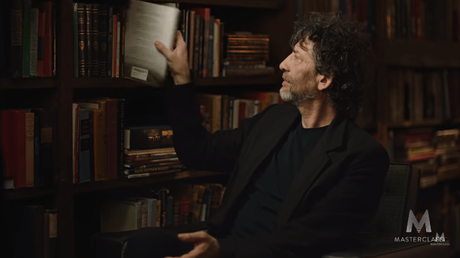
In this lesson, he also explains how to take a story, deconstruct it and rework it. He demonstrates this technique by re-interpreting some classic fairy stories.
These are just two examples of where you can get inspiration for a story. Neil Gaiman MasterClass Review provides you with several others during this video and the rest of the course.
Finding your voice
When Neil started this section, I can remember feeling a little irritated. I could not understand why finding your voice is important. But, by the time I reached the last part, I could see why every writer needs to find their voice.
Perhaps additional significantly, Neil Gaiman MasterClass Review explains how to find and develop the voice of your characters.
How to develop your story
As a writer, you are playing a game with your readers. Neil calls this the "what's going to happen" game. You keep them guessing, which motivates them to carry on turning the pages.
Neil explains a way to structure your story so it attracts your readers in. One of his best tips is to write down everything you know about the story, the characters, and the subject. Kind of like a brainstorm for one person.
When you do this your mind starts to notice connections. As you go ahead, a single idea is embellished and starts to form a mass. A part of work that you can then shape and craft into your story.
How to develop a story for short fiction
Short stories are not really my thing. I rarely read them and I have never written one. So, I confess I skimmed over this section of the course. At least the first time I took the course. The fact that Neil spent the primary four minutes of 1 video, in this section, reading a story aloud did not help. Plus, at this point, the fact that Neil speaks very slowly began to frustrate me a bit.
However, that said, if you want to learn how to write this genre I am sure you will find it helpful.
For example, his tip about minimizing the number of words you use, when writing a short story, seems counter-intuitive. But, I know, from experience, that this is excellent advice. I write a lot of blog articles, so know for short pieces, less are definitely more. The more concise you are the better it reads.
In fairness, the case study video was excellent too. You will love the unique way he came up with the plot for his Blackberry piece called "March Tale". But, once again, it was the workbook I learned the most from.
The writer's art of world-building
This part of the course was fascinating. Neil describes it as "getting to play god".
Interestingly, Neil's advice is to start the process of creating your world by spending time in real places. Really experience it, notice the noises, the smells, the things that make them different. Asking you weird questions like how do all these people get fed? It will help you to embellish the world you are building. A process that makes it seem more real.
His tip on how to work out the rules in your fictional world is a particularly interesting one.
How to incorporate humor into your stories
Neil Gaiman says that humor is good for anything you do. Something I agree with but struggle to inject into my writing.
Sadly, I don't think I will be solving this problem any time soon. In this video, Neil reads an entire kid's book and then explains what he did to create it.
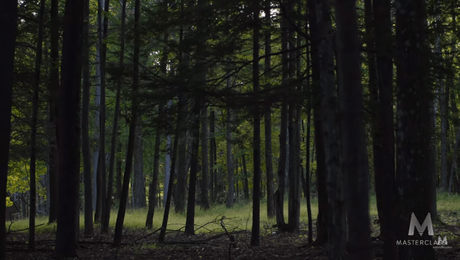
The problem is I don't see it as a funny book. It is quirky and fun, but not comedic, which is what I thought Neil was going to cover in this section of the course. So, I was a bit disappointed.
But, there are still some sensible tips in there. For example, putting a funny word at the end of a sentence. Plus, I got to hear about his work with Terry Pratchett and how he made his readers laugh.
Understanding and meeting your reader's expectations
If you want to sell books, lots of them, you must not disappoint your readers. So, it is great to see Neil explaining how to understand what your readers are expecting from you and how to meet those expectations.
Doing this is not as complicated as it seems. Working out if you are writing a genre book is step one. Once you understand if that is the case, it is relatively easy to understand what the reader is expecting to see included in the plot. Provided you weave these in, in some form or another, your reader will not be disappointed.
Learn how to edit your stories
When you have written something, editing is not easy. You just do not see your mistakes. This is the case regardless of whether you write a letter, an essay or a blog article.
With something chunkier like a book, screenplay, comic or a play you also need to check the story and see it through the eyes of your reader. This makes the process even more complicated.
Fortunately, Neil takes you through everything, step-by-step. Plus, he outlines it all in his workbook.
Neil Gaiman Masterclass Pricing Plans Review
There are two ways by which you can purchase a Masterclass, a single Masterclass and an All-Access Pass for any of the gurus on the platform.
The All- Access Pass comes in real handy when you wish to take more than one Masterclass, so this means that there is no limit on the number of Masterclasses on the All Access Pass.
A 30-day money-back guarantee is also available for any of the Masterclass packages you purchase and you will get a complete refund of the amount in case you are not satisfied with their services.
Mobile apps
You can download the Masterclass app for your iOS or Android device for free from the App Store and Play Store and access your Masterclass lessons anywhere. Not just that, you can even save lessons as favorites, adjust the playback speed and watch them anytime on the go.
Also Read:
Conclusion:-Neil Gaiman Masterclass Review | It Is Worth?

No doubt about it, Neil Gaiman fans will love this course. So, will budding writers, especially those that want to learn how to write short stories and comics? There are not many courses that cover these styles of writing.
It's a wonderful course on what stories are, the importance of storytelling, how to tell stories that matter with a variety of exciting techniques, and most of all a healthy kind-spirited push forward that you wouldn't otherwise have had.
You simply can't get better than that. I might even go so far as to say this is the best Neil Gaiman Masterclass Review on the internet.


